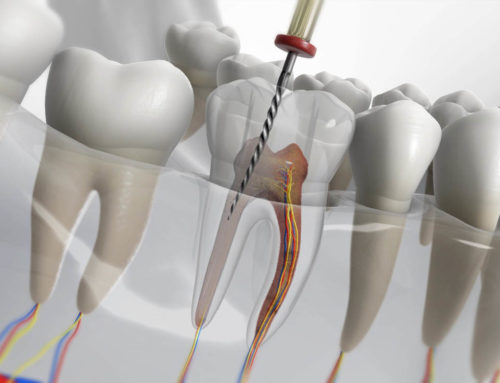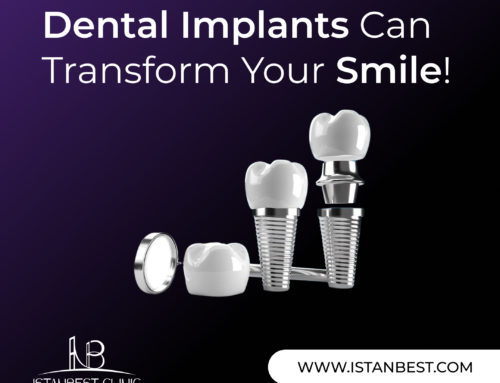Are you missing teeth, or having problems with an ill-fitting denture or bridge? If so, you should consider dental implants.
The next best thing to real teeth, dental implants are designed to look, feel, and function like your natural teeth so you can be confident in your smile. Because of their advantages over traditional tooth replacement options, dental implants provide excellent long-term value and can be a terrific investment in long-term oral health.

What is a dental implant?
A dental implant is a prosthetic replacement for a missing tooth. Natural teeth consist of the crown and the root. The crown is the visible section that is covered with white enamel. Supporting the crown is the tooth root which extends into the jawbone. The root is the part of the tooth that is effectively replaced by an implant. There are commonly three parts to what is described as an implant – the implant device itself (which is inserted directly into the bone); the abutment – the piece that connects the implant device to the third part – the overlying crown or denture.
Implants can be used to replace a single tooth, several adjacent teeth, all missing teeth in a jaw, or to support a removable or fixed denture. The number of implants being placed will depend on the final restoration and the amount of bone available for the implant.
Today’s implants are predominantly made of titanium, a metal that is bio-compatible and offers strength and durability as well as a unique property of fusing directly to bone – the process known as osseointegration. Other materials, such as zirconium, might be used to make implants in the future. But for now, these materials have not been perfected for general use.
What are the benefits of dental implants versus other treatment options?
Benefits of dental implants include:
- Predictable and excellent outcomes with improved appearance, speech, chewing ability, and over oral health. More importantly, implants give patients the confidence to smile, eat, and engage in social activities without worrying about how they look or if their dentures will pop out.
- Preservation of the remaining healthy bone after extraction.
- Preservation of adjacent teeth and their enamel, as they do not need treatment to replace a missing tooth (e.g., bridge).
- Resistance to cavities as implants do not decay like natural teeth.
- Potential for a fixed restoration as opposed to a removable prosthesis.
- Assist in retention of a removable prosthesis.
What is involved in getting dental implants?
Step 1: A thorough examination
The first step involved is a thorough examination and development of a treatment plan.
Step 2: Placing the dental implant(s)
Following an examination, the placement of the implant and final restoration includes several steps:
A titanium, screw-shaped implant post is surgically placed in the jawbone and allowed to heal.
- For a single-stage procedure, the dental implant is placed and a temporary abutment is attached.
- For a two-stage procedure, the dental implant is inserted, covered by the gum tissue, and given time to heal.
As healing occurs, the implant will “osseointegrate” or fuse with the bone to form a strong, long-lasting foundation for the overlying prosthesis. This can occur within weeks to months. At times, a temporary prosthesis can be used to restore the area while the implant is healing.
Step 3. Attaching the abutment
Once the implant has integrated, an abutment that passes through the gum tissue is screwed onto the implant. The final prosthesis, which may be an individual tooth, a bridge, or a denture containing multiple teeth is then attached to the abutment.
- For a single-stage procedure, the final (or permanent) abutment is placed and an impression (or 3D scan) is taken from which a crown will be created to match your natural teeth.
- For a two-stage procedure, a secondary surgery is performed to reveal the dental implant for abutment placement.
Step 4. Fitting and re-examination
When the crown is ready, it is attached to the abutment. This is usually followed by one or more follow-up visits to ensure a good fit, look and functionality. The last step is to maintain at home care, and schedule regular dental visits (as recommended by your dentist) to maintain implant health.
All-On-Four Dental Implants
Full-arch fixed implant bridges, or sometimes called all-on-four, can be a cost-effective solution to missing teeth as they require fewer implants in the jaw than traditional methods. They can also be a great alternative to conventional removable dentures. The all-on-four dental implant procedure provides a natural looking set of teeth with a non-removable implant-supported upper and/or lower retained bridge, to restore a new and complete smile.
How long will my implants last?
Dental implants normally last a long time with good home care and routine professional check-ups in the dental office. Like natural teeth, good oral hygiene, flossing, and brushing are needed for dental implants and their supporting restorations. Regular visits to the dental provider for maintenance is essential to monitor the health of dental implants and the connected restorations.
Do dental implants require special care and maintenance?
Dental implant care and maintenance is similar to how your dentist recommends you clean your natural teeth. Depending on the type of dental implant supported prosthesis, you may require a few additional oral care compliments to best maintain your dental work. Typical care for dental implants includes regular dental cleanings and good home care that includes brushing, flossing and rinsing with mouthwash. Some complex dental implant prostheses may require the use of accessories such as a Waterpik, special dental floss or small brushes designed to clean in tight spaces.
How do I know implants are right for me?
The best way to know if dental implants are the suitable treatment option is to consult with a dental care professional. During the consultation appointment, the dental care provider will gather a medical history, dental history, and current oral health status. It is recommended to discuss the needs and concerns with the dental care professional, such as a general dentist, or a prosthodontist as part of the treatment planning process.




